Cycling infrastructure / Innovation
The Dutch Design from a North American Perspective
A key part of learning to build less car-dependent cities is to experience them first-hand. Last month, Matt Pinder had the chance to work from the Mobycon office in Delft, Netherlands to soak up knowledge about Dutch best practices so he can reach his goals to better support North American cities in their multimodal transition.
On this special North American Staff Retreat, I was able to meet the many faces of Mobycon in Delft and our new Den Bosch office, as well as tour the area by foot, bike, and even boat!
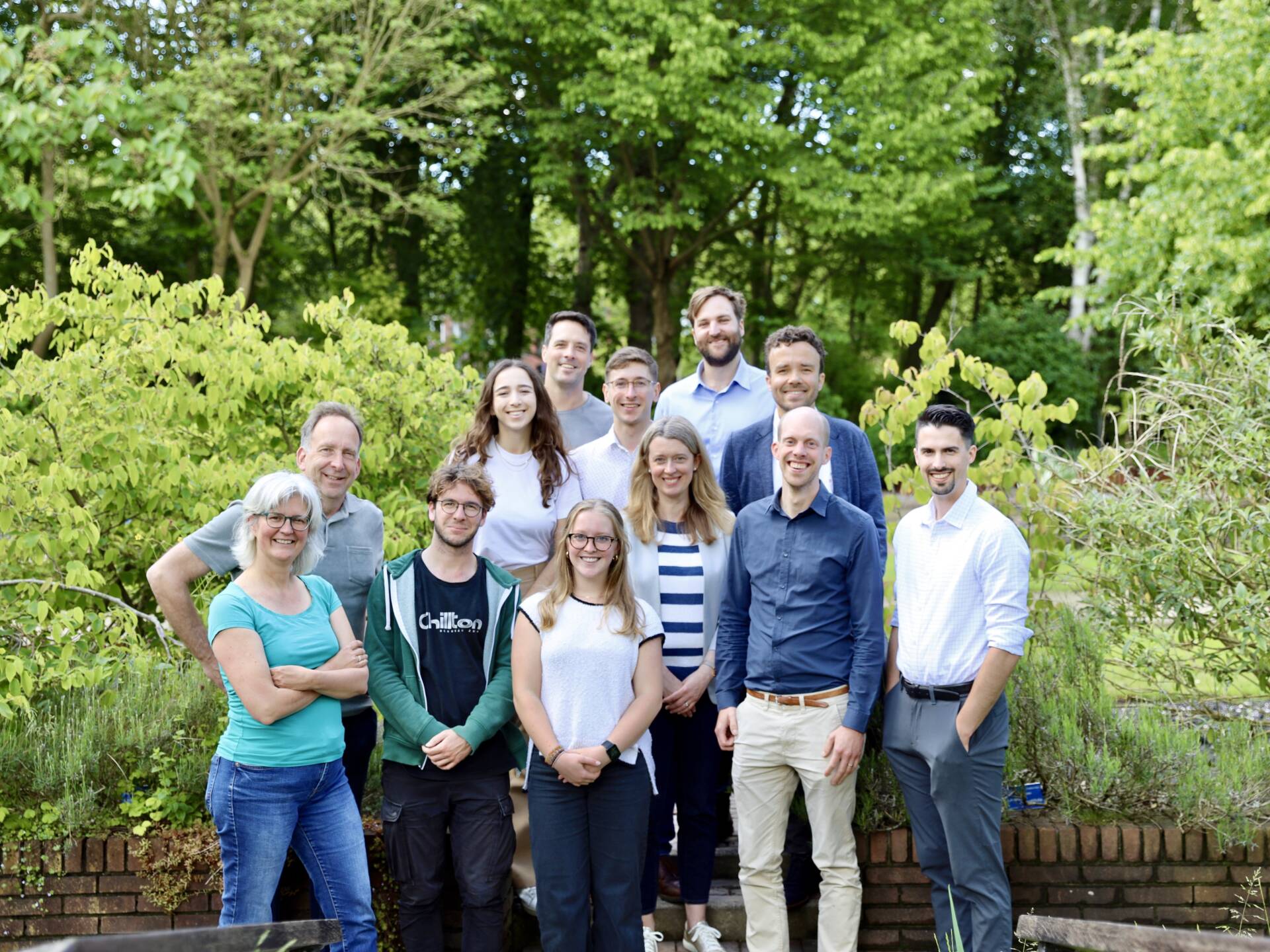
The beginning of my week involved meeting some of the Delft team, settling into a new time zone, and a guided tour of Delft and its history (including the first woonerf in the Netherlands!) with Johan Diepens. I visited interesting intersections and roundabouts, spectated the morning school rush, and saw one of the busiest bike routes in the Netherlands.
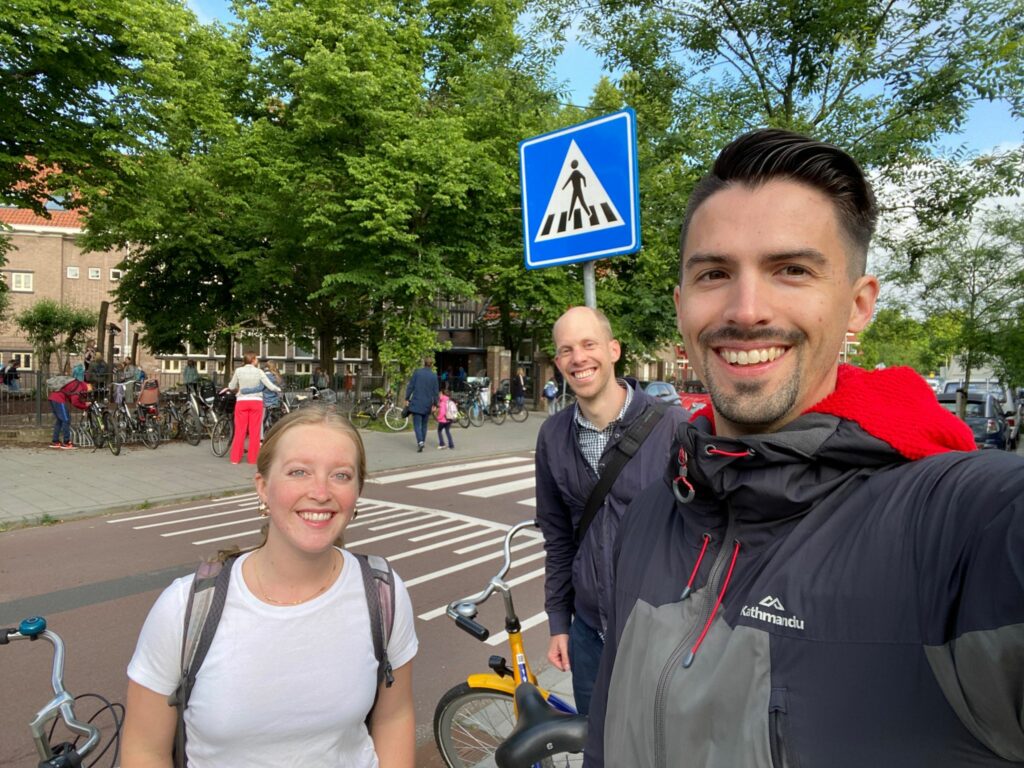
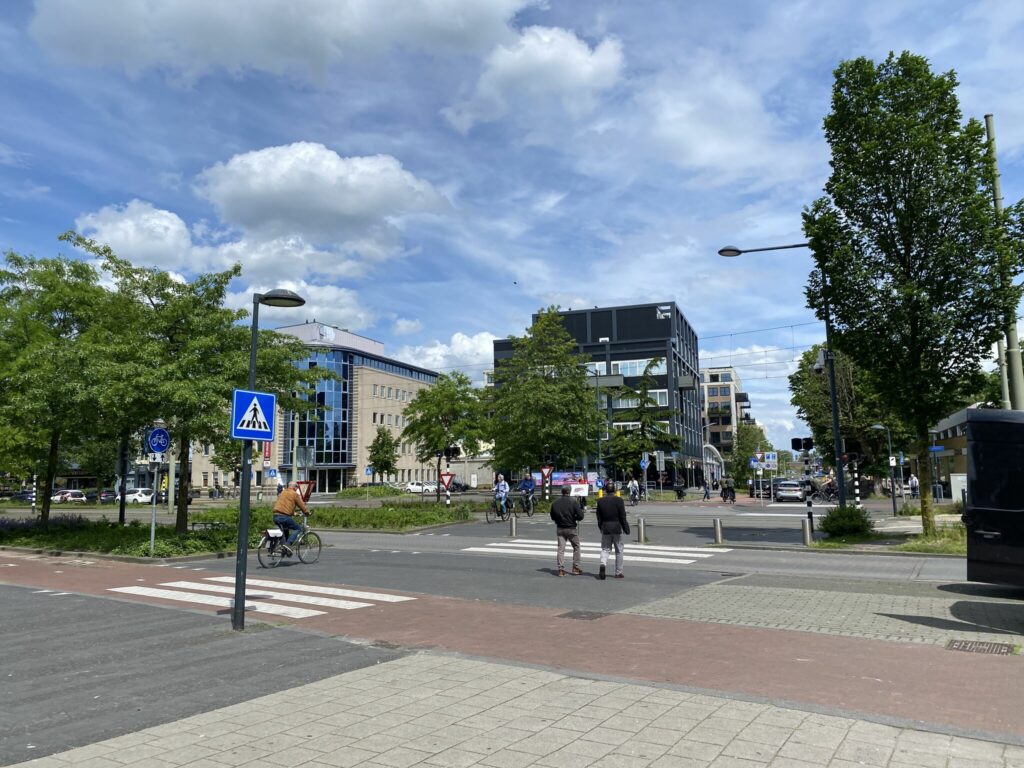
Also visiting were Elizabeth Allingham and Nick Falbo, who joined us for a retreat full of collaboration. We visited the beautiful Delft botanical gardens for an afternoon workshop, followed by a scenic canal tour of the historic Delft city center.
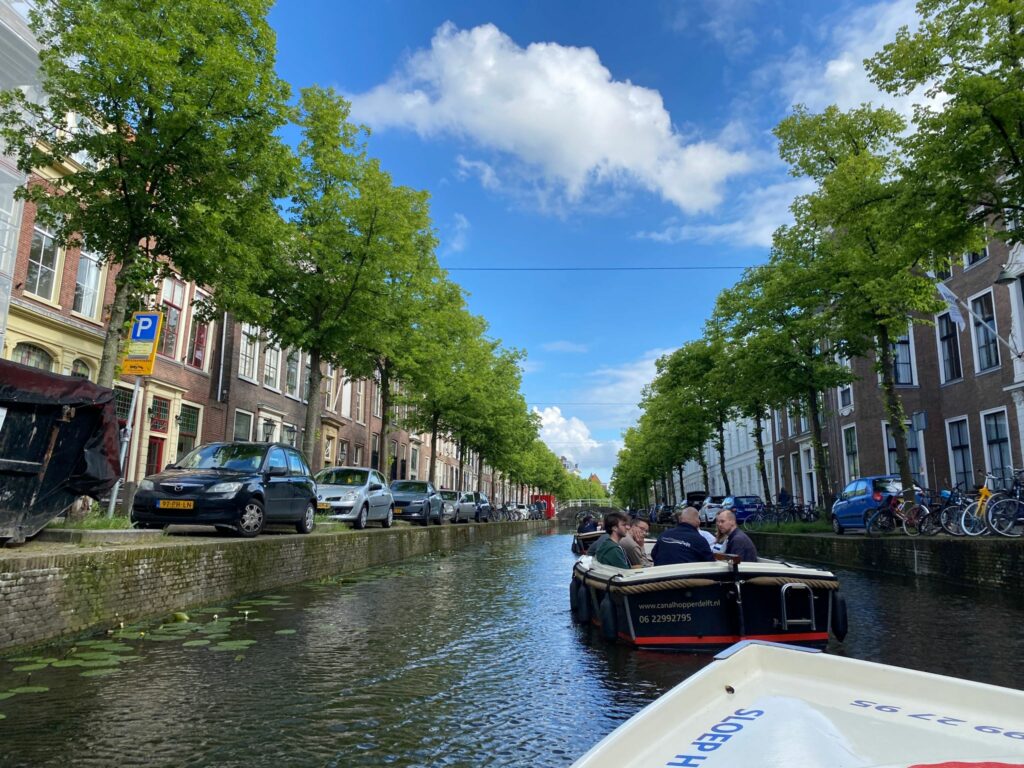
Later in the week, Robin van der Griend led Nick Falbo and I on a tour to experience a plethora of roundabouts in Voorburg, including some of the variety that is no longer encouraged (photo below). We even bumped into a local city councillor who stopped to chat on his bike ride to work.
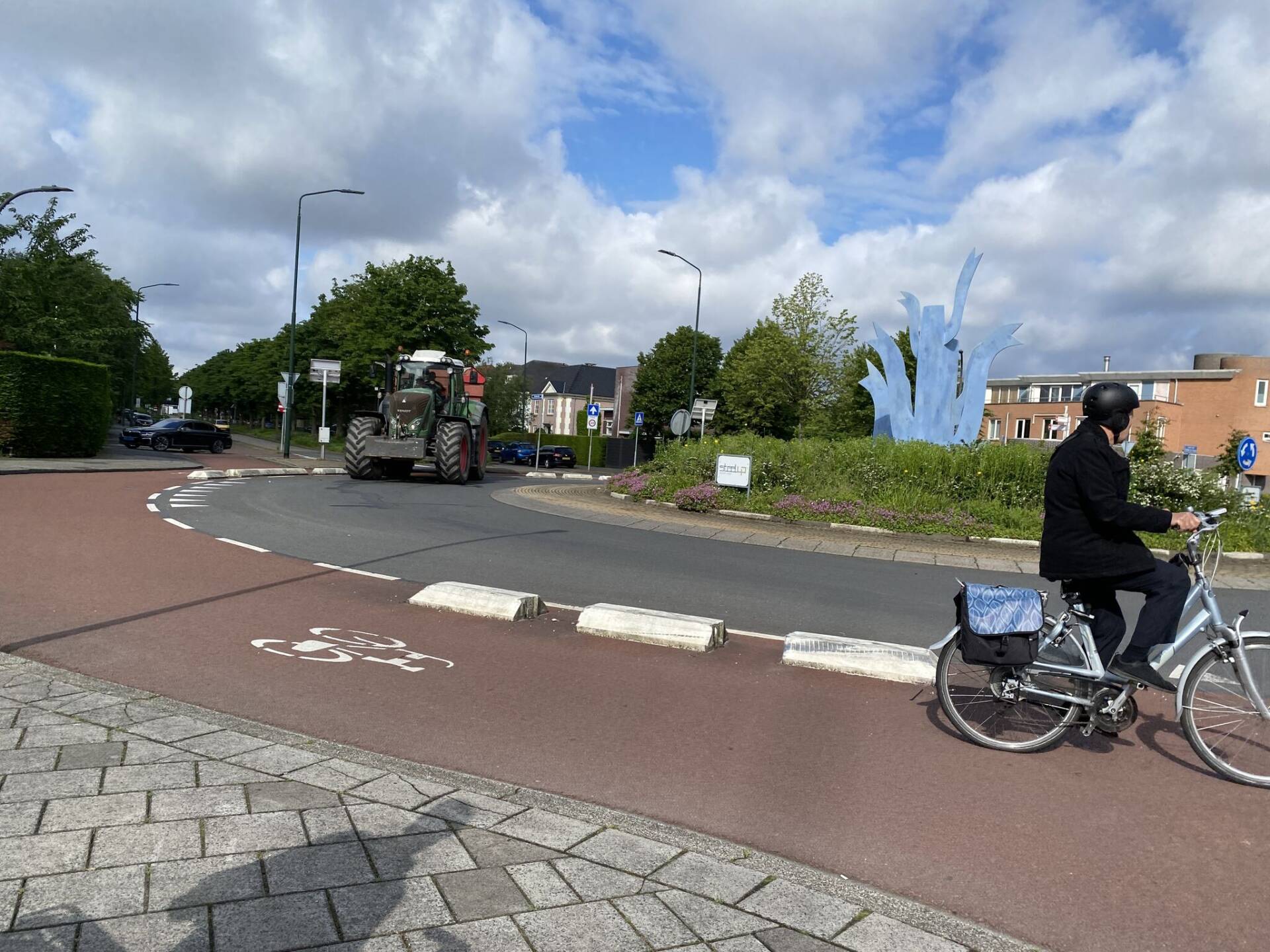
It was extremely useful to see first-hand what elements both increase and decrease safety and efficiency. With our new perspectives, we were able to create a series of educational Mobycon Academy videos (coming soon!) examining the Dutch designs and the possibility of implementing them in North America.
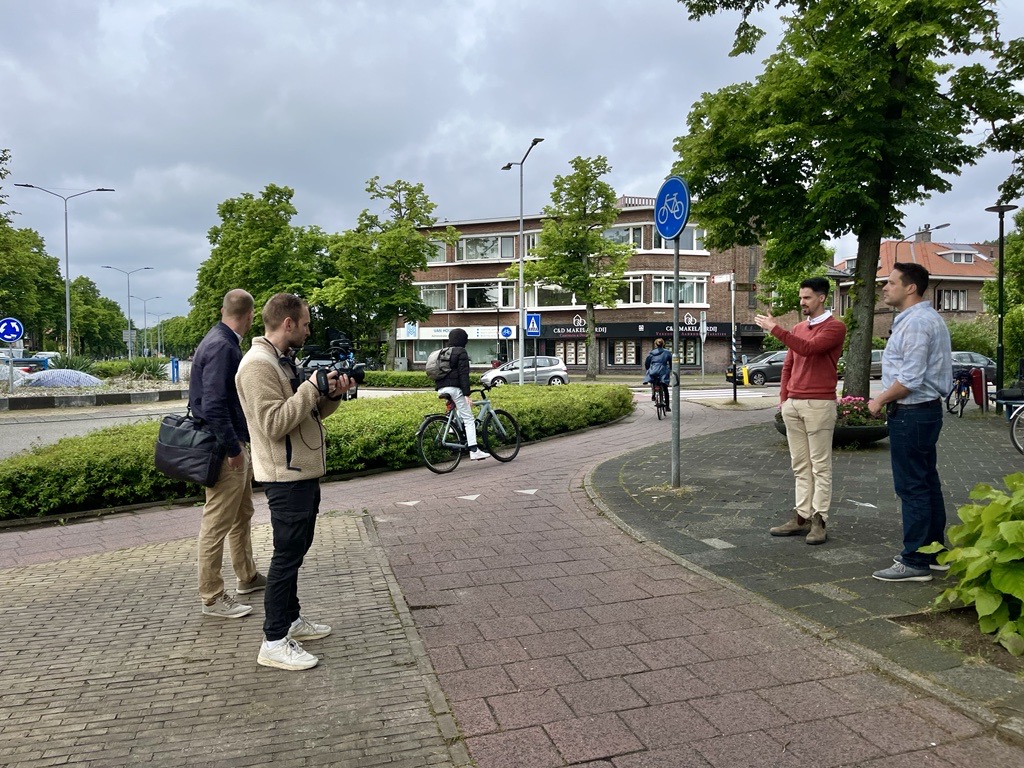
I made the most of my final day by travelling by train again to Haarlem and Amsterdam. Former American engineer Steffen Berr gave us a bike tour of Haarlem, (a city with a beautiful centre, but just outside: unbelievably wide suburban roads). This was followed by an evening in Amsterdam spent touring via bike. Here, we had the chance to visit the new underground bike parking facility at Amsterdam Centraal, with over 5,000 spots.
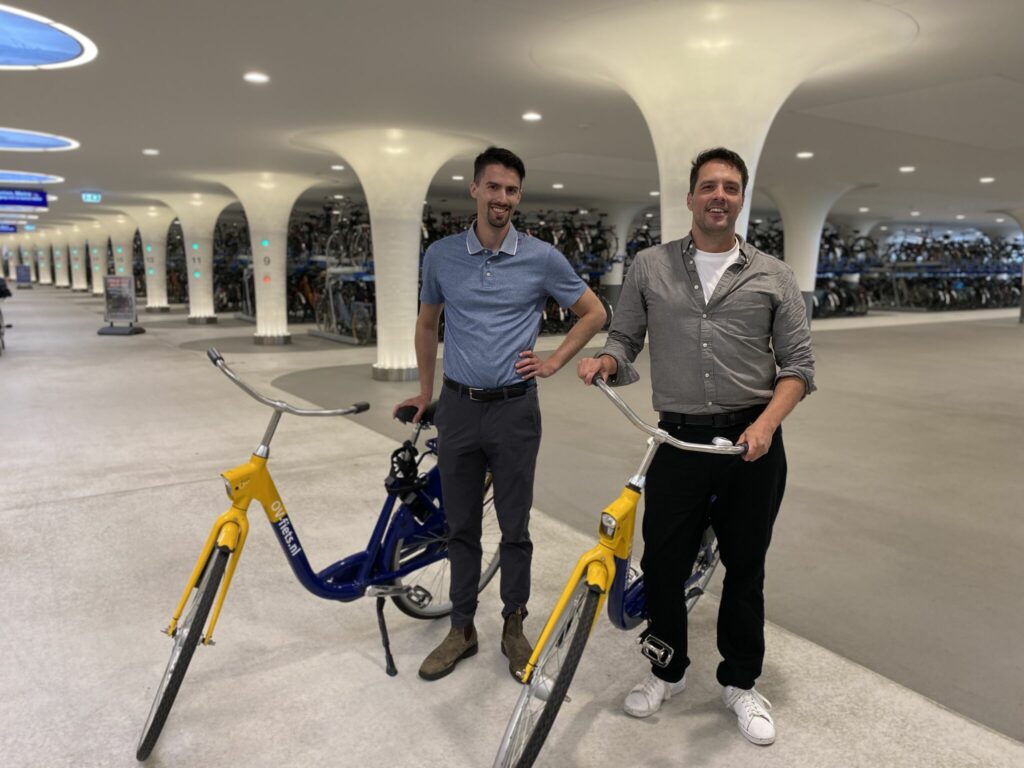
Overall, I’m struck by how much has changed in Amsterdam in the 6 years since I was there last. Nothing is ever fully complete in the Dutch mobility system – they are constantly experimenting and improving streets to improve movement and placemaking. I look forward to implementing these designs and ideas into practice now that I am back in Canada.
If you have any thoughts or questions about this trip, please reach out here. I would love to chat!


 ">
">